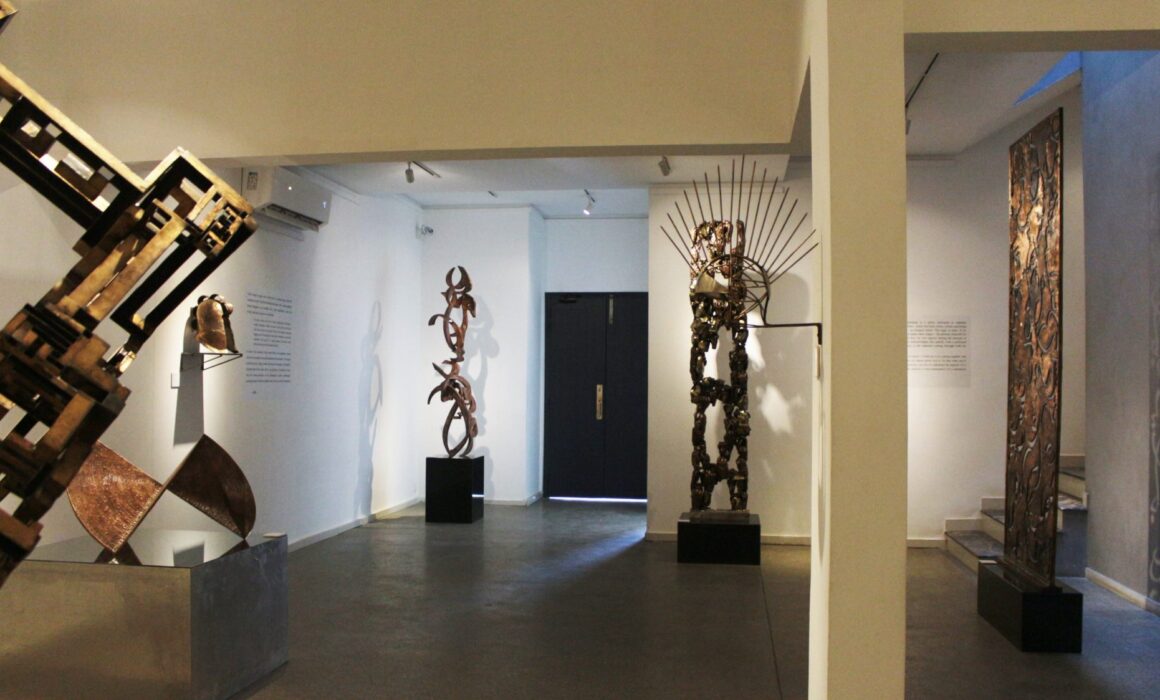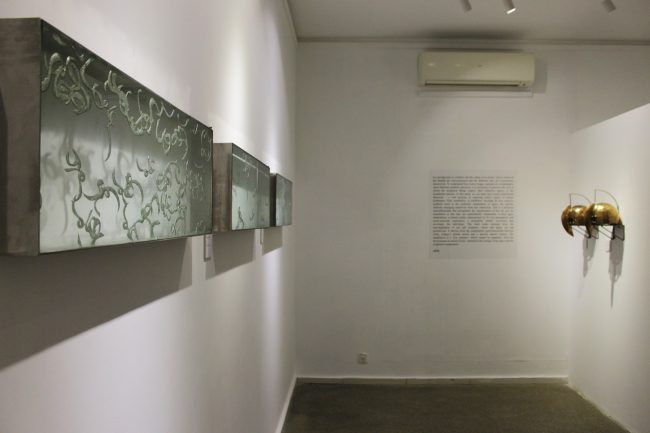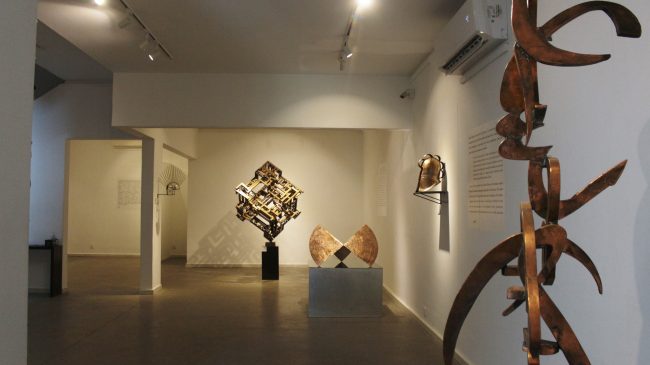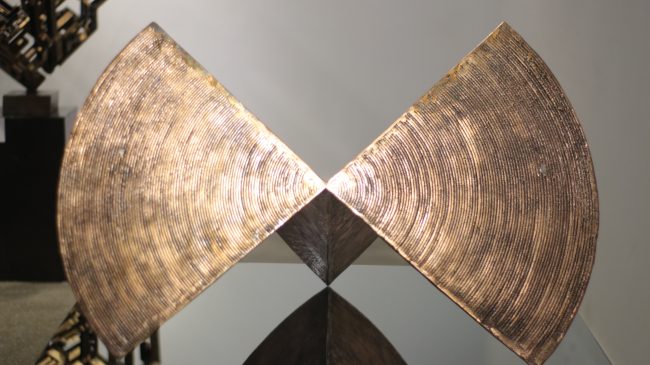Spooky Action – Art Now
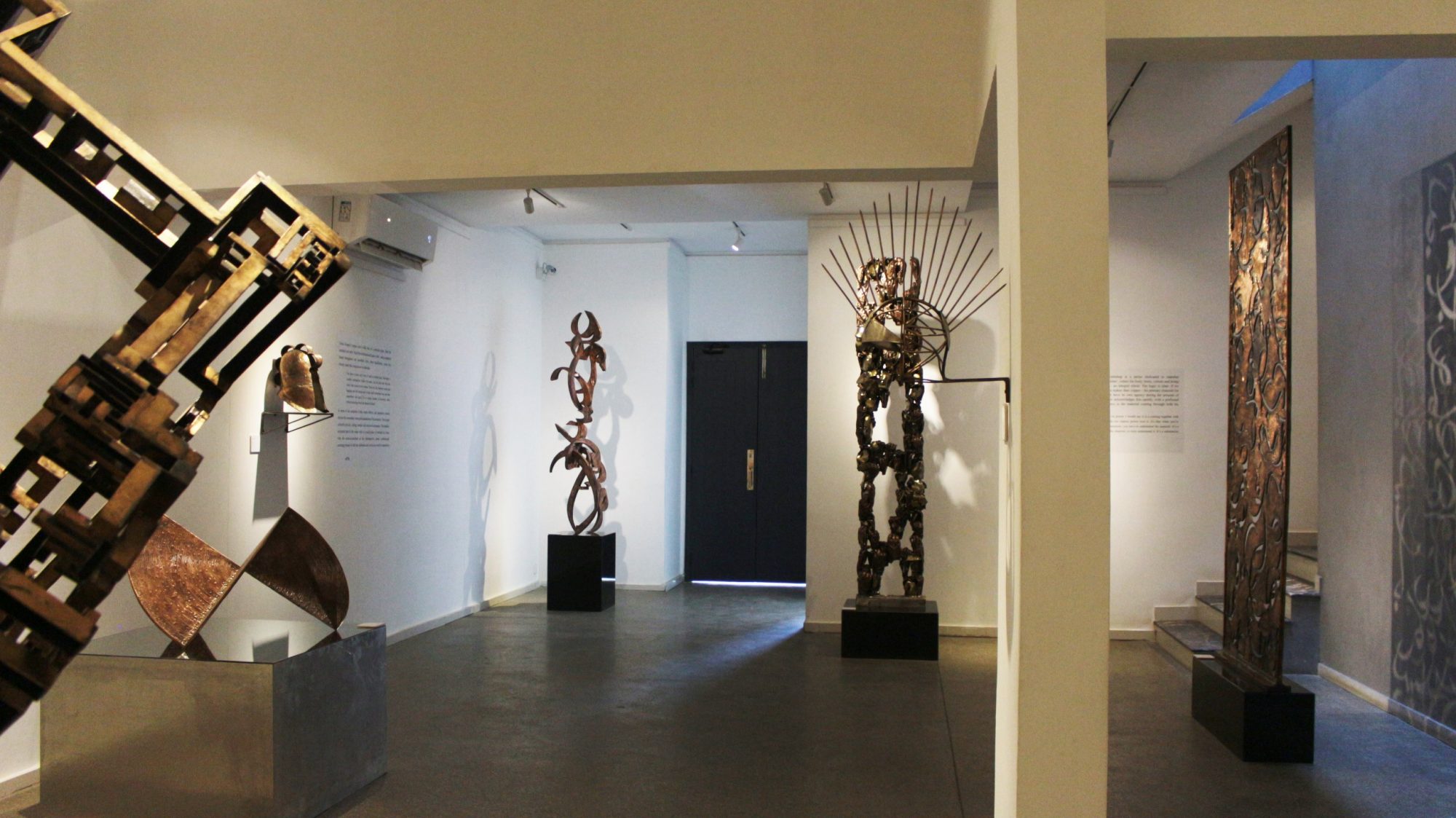
The exhibition and collaborative performance, Spooky Action At A Distance, by Amin Gulgee was curated by Adam Fahy-Majeed was recently held at Canvas
The exhibition and collaborative performance, Spooky Action At A Distance, by Amin Gulgee was curated by Adam Fahy-Majeed was recently held at Canvas Gallery
A set of characteristics runs through Amin Gulgee’s long-spanning, very notable career: expect the unexpected and expect a spectacle. His recent exhibition Spooky Action At A Distance did not fail to meet the audience’s expectations.
One of the benefits of social media, for better or worse, has been the instantaneous dissemination of events, and in this case this writer is fairly sure that anybody reading this will have either seen images or short clips from the opening night of the show. Almost surely this precludes any attempt to closely describe the objects included in the exhibition. Along with this scenario is the fact that Adam Fahy-Majeed’s curatorial essay explaining the concept of spooky action at a distance, in quantum physic is highly explanatory, for one thing, and then, short statements posted on the some of the walls appoint precisely the place wherein lies a particular approach that Gulgee has toward his exhibition space, that is, his ability to be aware of the topographical and architectonic affordances that a site might offer. Gulgee has consistently worked toward the melding of exhibition and memorable images, and is adept at orchestrating the opening and closing moments of that duration of time which can be genuinely called a true experience.
So, it remains for us to take up other aspects of the collaborative performance and go down other avenues opened to our perceptions. One can recall that a venerable lineage is evinced in the artist’s oeuvre; while the Dadaists and Surrealists were out to wreck the sensibilities of their times, the Neo-surrealists were reacting to the bored and ennui generated by capitalism, the deadening effects of television being their prime target. And, begging pardon for the pun, the concept of Happening happens to be a key idea in the philosophical works of Edmund Husserl in which he discusses experiential temporality. Taken in that sense, a Happening is a highly consequential occurrence, one that may even be unique, with its non-repeatability emphasized. As such, Gulgee generally engineers matters so that all that is seen and heard in his exhibitions remains memorable to the greatest extent.
Coming back to Fahy-Majeed’s statement about spooky action being a concept in quantum physics, we are reminded that teleportation does not involve the actual transfer of solids in time and space, but is the simultaneous appearance of a state of affairs at two different points, more a transfer of information than anything else. Apparently, this last is the inspiration that lay behind the creation of a series of helmets to be worn by some of the collaborators of the show. The theory is that the helmets, apart from being physical commemorations, will have retained the performer’s experience and the information might be shared elsewhere in the universe. These helmets, reminiscent of Greek war helmets that would oftimes have a spectacular plume attached on top, in order to terrify an adversary, are modified in different ways, and are decorated with simple modernist structures, manufactured seemingly as antennae. One could imagine, inversely, that in a manner similar to the storyline of the film, Contact(1997), Gulgee may have at some point received the instructions and inspirations from his counterpart in a parallel universe.
Then there is the matter of the Daemonic, which is spoken of as the nexus of the human mind and the body. We are in fact familiar with the lines of investigation that connect the two, theorized as a mental illness that finds its outlet in diseases of the body – psychosomatic illness. Not as dire, but related, is the term ‘visceral’ which we use for art that causes a bodily reaction in the viewer. Keeping to this field of interest, precedence is given to the chemicals that we call neurotransmitters – substances that are crucial for the passage of information between nerve -endings, and which are in one sense the information itself. With this we come full circle to Amin Gulgee’s main endeavor alluded to earlier: the insouciant blurring of borders in order to create a visceral spectacle that is specific to its time and place. There is no question but that ours is an environment in which generally, theatricality is far more accessible as a means of interpretation,, as most will agree. As a corollary, Gulgee is an artist who is adept in his understanding of the ritualistic uses of the four elements, Earth, Wind, Water and Fire. Hiis sculptures epitomize mastery of the forces of nature, and his performances are imbued with palpable vitality.
In a brief telephonic query whether he feels that he has presently had something new to say (or do, for that matter), Gulgee responded, quote unquote “ One is always developing.” This becomes a factual claim, since, as Fahy-Majeed documents in his essay, the artist has, in a divergent idiom, produced a hanging combinatoire composed of clear sheet glass and silver-gray calligraphic shapes. Gulgee has habitually incorporated coloured glass, mainly in the form of broken bottles embedded in metal or concrete, to create masses of baroque efflorescence; an eagle-eyed passer-by may spot the Max Ernst-like outgrowths adorning the rooftop of the Gulgee Gallery. Thus, one may imagine that from somewhere out there, Duchamp’s extraordinary glass and metal work titled The Bride Stripped Bare By Her Admirers, Even could be a source emanating further states of affairs, waiting in the wings, ready to manifest in another epic series of work by this energetic and hugely dynamic maker of wonders, one who remains tireless in his zeal and passion for creating art.
Source:

